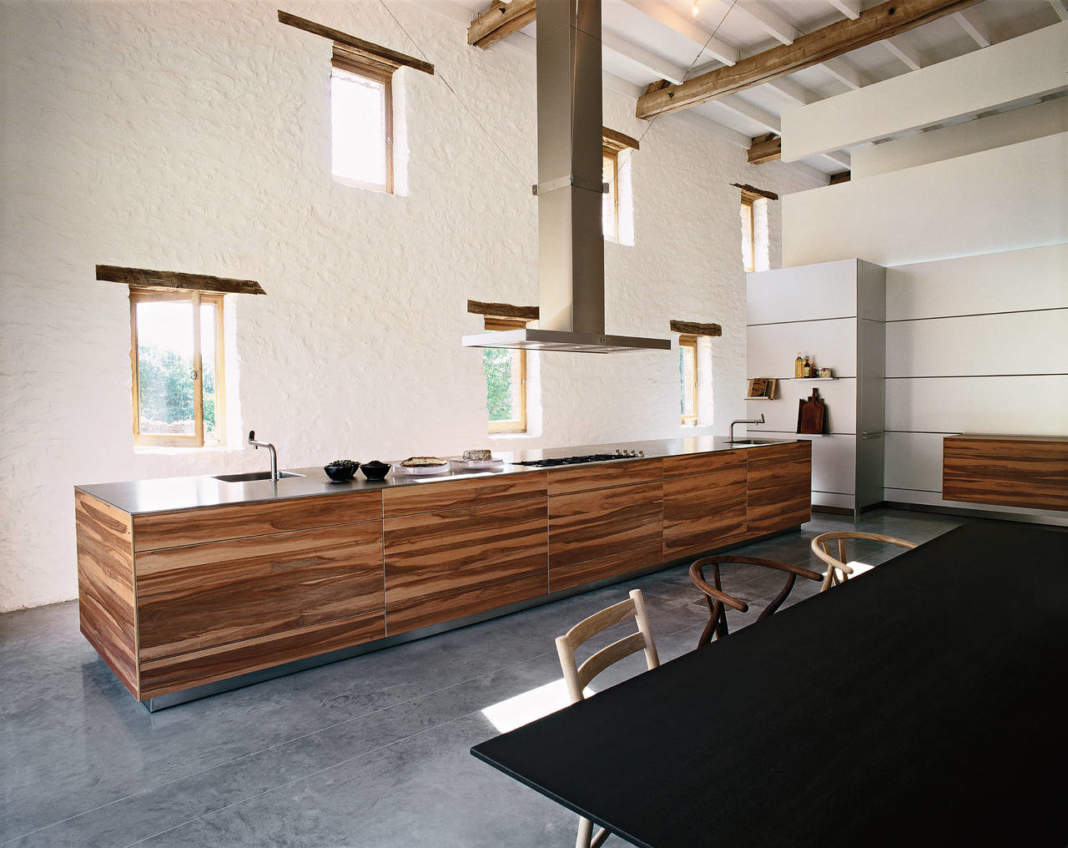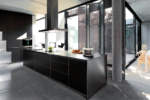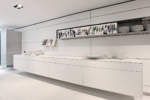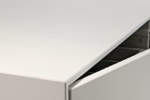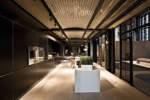the interpretation of Bulthaup
dialogue with Barbara Manganaro, Country Manager for bulthaup Italy
bulthaup is shaped by the passion of being ahead of its time and by the will of create innovative solutions for the furnishing of “living spaces”. The supporting force of the company‘s philosophy and the motivational desire to constantly . After all, our work is centered on people and their needs and wishes as time passes.
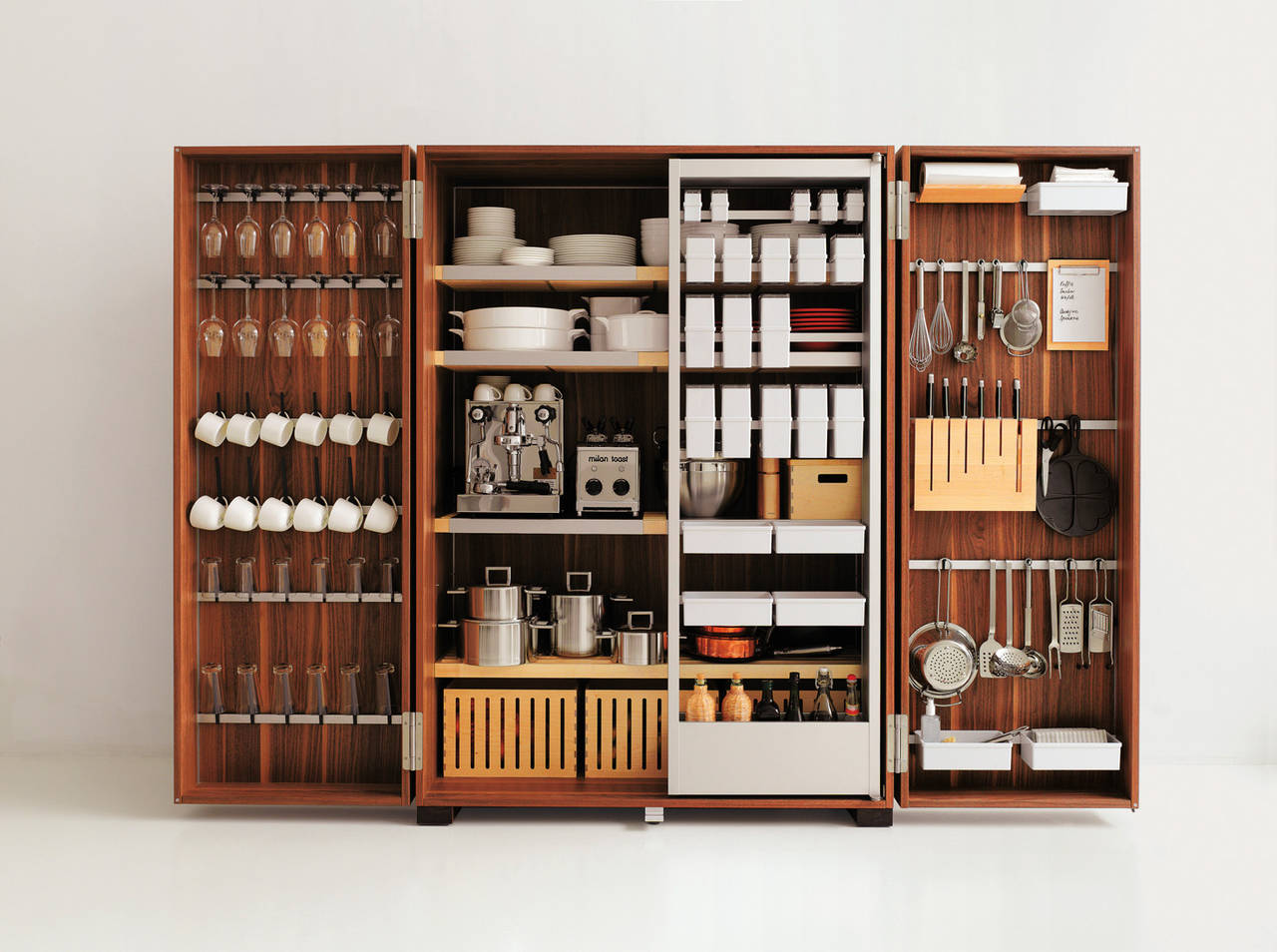
area: What are your kitchens’ characteristics in terms of the concept of space?
B.M.: Contemporary architecture and modern product design increasingly demand the creation of all encompassing designs that adopt a unified and linear style along with a coherent and precise choice of materials. The celebrated architect Richard Meier often said that architecture has to “create an environment for human beings”. The architects at bulthaup think and plan their designs with this idea in mind, their objective is to create ‘Living Space’ architecture: offering complete solutions for furnishing the kitchen and its surrounding environment. The kitchen world has been redefined by bulthaup, moulding it around the individual, turning it into a ‘Living Space’. One of the benchmarks of bulthaup’s philosophy is to leave behind the superfluous in favour of the essential. The intention is to create functional ‘Living Spaces’ with a strong sensory appeal, where people can cook and communicate, and where people’s needs come first. After all, good architecture is born when reason, vision, and movement are collectively at ease.
area: Which materials do you use most when making your kitchens? Is it purely a question of function, or does a tactile and sensory component come into play too?
B.M.: bulthaup offers its clients a wide range of materials, from stainless steel, lacquers, and laminates, to aluminium and wood. The choice of one finish over another is entirely subjective, and primarily depends on personal taste and aesthetic sense, and certainly on how the client wants to use the kitchen; different materials have different qualities and functions. Naturally the final choice cannot ignore the architectural context in which the kitchen will be placed. More important than the prevalence of one or another component is this certainty: whatever the final choice, the client will find themselves with materials selected with great accuracy, according to the most rigid international parameters, and with perfect workmanship, the fruit of a very special marriage of modern manufacturing and innovative industrial production.
area: To what extent do technology and design influence your production?
B.M.: Our modus operandi has always been founded on a personalised approach in terms of research, the development of highly functional systems, a distinct aesthetic orientation, and on design aimed at the essentiality of form and the pureness that is used in the manufacture of the materials. Last but not least, the excellent quality of bulthaup can be seen in the smallest detail, this is the result of unique manufacturing precision, for example bulthaup’s patented laser technology. Developed with leading experts in the field of laser systems construction, this new technology permits casting and automatic soldering of laminate borders, making the use of glue unnecessary and creating watertight, seamless edges. The outcome is the creation of frontals that look like they have been forged out of a single piece, pleasing to the eye and touch.
area: What is your relationship to the cooks, or to the people who live first hand the environments that you create?
B.M.: As I mentioned earlier, at bulthaup we are strongly orientated towards the individual and therefore towards our clients, who are at the centre of our every thought. This is clearly expressed in every one of our products and designs. After all, bulthaup’s capacity to best interpret people’s needs, both in terms of functionality and aesthetics, is born precisely out of the interest we take in people who live the kitchen ‘professionally’. Perhaps not everyone knows that Gerd Bulthaup and Olt Aicher, in order to create a professional kitchen both in terms of function and ergonomics, carried out their initial research in the kitchens of various European restaurants, especially Italian restaurants. This attention paid to authentic cooking can be seen clearly also in bulthaup’s catalogues, which always show ‘real’ houses with ‘real’ kitchens and never ad hoc settings created in photographic studios.
area: Does your company have in-house designers who collaborate on the creation of objects, or do you entrust outside designers with that task? How important is the designer’s contribution to your production?
B.M.: bulthaup uses a team of in-house designers, but does not exclude collaborating with outside designers too. For example, it celebrates its long and fruitful collaboration with Olt Aicher, whose philosophy has been summarised by bulthaup in the book “Die Kueche zum Kochen” (The Kitchen is for Cooking). Olt Aicher has contributed an innovative organisational model to the kitchen, studying its ergonomics and reformulating its space into an essential space, not only a space for cooking in. Another collaboration central to bulthaup was with Herbert Schultes, who contributed to the development of the S25, gave life to the S20 and, together with the bulthaup design team, collaborated on the design of bulthaup’s b3 system, which was unveiled in Milan in 2004. In 2008 bulthaup launched b2, the kitchen laboratory, which was the result of a collaboration with the EOOS group of Viennese designers. The much talked about collaboration with John Pawson is currently in the pipeline.
area: What are the most important products in the history of your company?
B.M.: For us one project is not more important than another: all our projects have contributed to the development of products that have left a strong imprint on the history of our company, adding to its growth and evolution.
area: Which designers have enriched your production the most?
B.M.: Herbert Schultes, as you may guess from what I just said.
area: The current trend is to make the kitchen part of the living space, a single space where we can allow the act of cooking to live side by side with that of receiving guests, a presence to be shown not hidden. What is your company’s attitude with regard to this?
B.M.: For bulthaup, the kitchen will increasingly continue to be the Living Space that goes beyond the kitchen itself, whether we are talking about an open plan space, or an intriguing intimate room. The current trend is to restore the kitchen as the hearth of the house, in the sense that it functions not only in relation to the preparation of food, but also as a place where we spend time together and share our lives. To this end bulthaup, which loves to define itself not simply as modern but ‘timeless’, is fully aware of the fact that the act of cooking no longer means just the preparation of food but also social richness: having time for yourself and for others. This is exactly the direction in which we are moving


